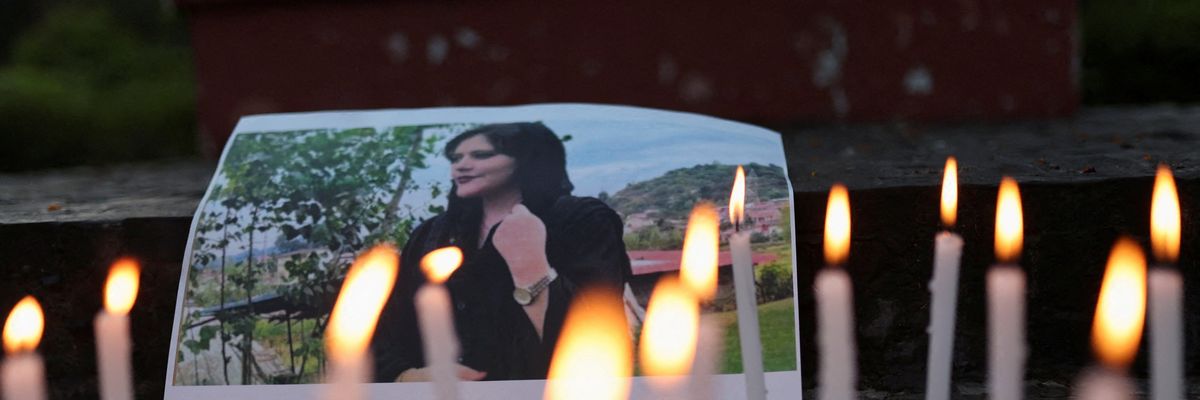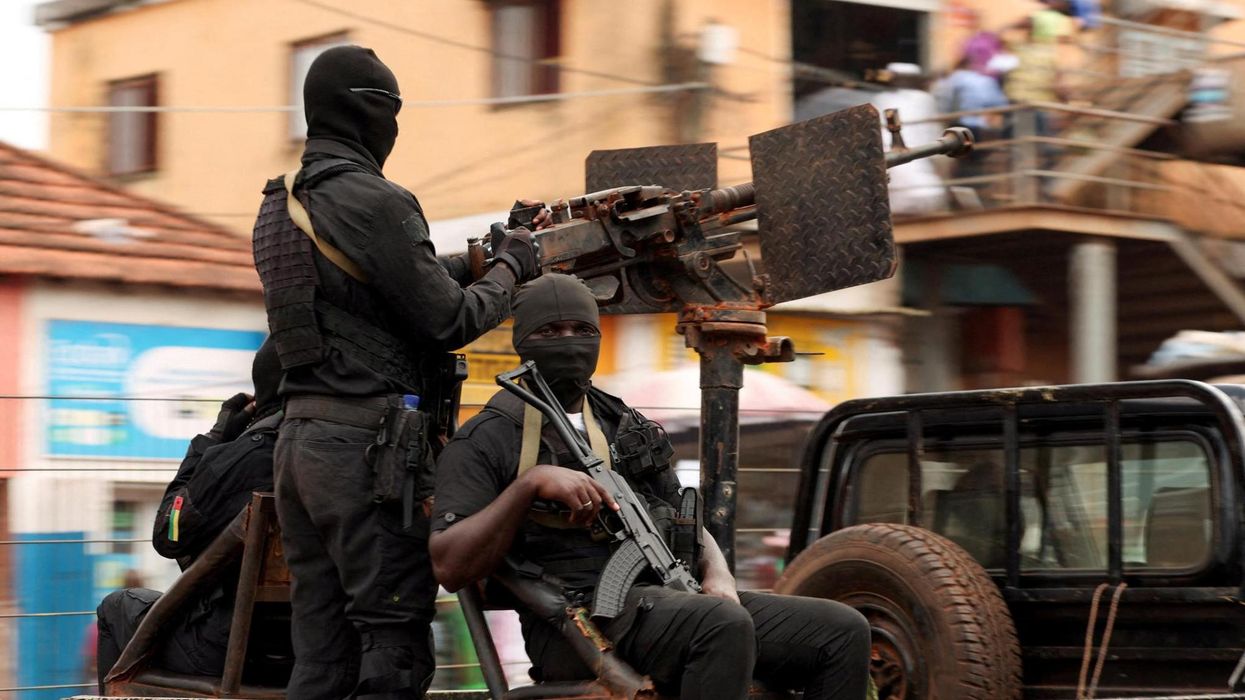On September 13 2022, Ms. Mahsa (Zhina) Amini, a 22-year-old Iranian woman was detained in Tehran by the Guidance Patrol (incorrectly translated as “Morality Police” in the West) for allegedly not wearing the mandatory Islamic hijab. While in detention, she collapsed and was taken to a hospital. Three days later, she passed away.
The Iranian government claimed that Ms. Amini had suffered a stroke followed by a heart attack. Eyewitnesses alleged, however, that she had been mistreated, and that her skull might have cracked. Regardless of the precise circumstances surrounding Ms. Amini’s tragic death, the Iranian government was fully responsible, because she died while in its custody.
The brutal circumstances that led to the tragic death of Ms. Amini led to large-scale demonstrations, particularly by young people, which began in Tehran and quickly spread to over 140 cities and towns around the nation, lasting until early January. Up to 529 people were killed, including about 71 children and 68 security forces. Thousands of security forces were injured, while thousands of civilians — at least 22,000 according to Iran’s Judiciary, including over 700 college students — were arrested, although over 95 percent of them were released. In addition, 48 protestors were given death sentences by the courts, although the government executed seven demonstrators, at least two of whom were accused of taking part in the murder of security forces.
As we approach the first anniversary of Ms. Amini’s death, the exiled opposition has called for demonstrations, both inside and outside Iran. But, regardless of what may happen in the coming weeks, the question is, did the demonstrations produce any positive results for the Iranian people? I believe that they have produced four very positive results.
First, although the government does not admit it, and is still trying to contain Iranian women’s rejection of mandatory hijab by imposing financial hardship and even jail sentences on them, the mandatory hijab is practically dead. Large numbers of women all over the country, including many among those who believe in hijab, but oppose its mandatory nature, have been refusing to cover their hair, and as time passes, this will only become more widespread.
Second, Iran is now pursuing a relatively moderate foreign policy toward the Middle East. The ruling elite is keenly aware that, as tragic and brutal as the death of Ms. Amini was, it only represented an excuse for the Iranian people to express their deep anger toward the regime for repressing the population, economic corruption, terrible state of the economy, and mismanagement of national resources. The government’s own statistics indicate that at least 30 percent of the population, and perhaps even a higher percentage, lives below the absolute poverty line.
The economic sanctions imposed on Iran by the United States also play a very important role in the deterioration of the economy. The Iranian government is well aware that if the economy does not improve significantly over the coming year, even a minor incident may spark large-scale demonstrations again — which would likely be even bloodier than last year’s — and that the improvements in the economy will not come unless Iran’s relations with the rest of the world, particularly with the Middle Eastern countries, improve.
Thus, the Islamic Republic has begun mending fences with the Arab States of the Persian Gulf. Saudi Arabia has re-established diplomatic relations with Iran, while the United Arb Emirates elevated its diplomatic relations by sending back its ambassador to Tehran, as also did Kuwait. Iran’s hope is that by reducing tensions with its neighbors in the Persian Gulf and the greater Middle East, the rich Arab nations will be willing to ignore U.S. sanctions to expand commerce with Iran, invest in the country, and facilitate commerce between Iran and the rest of the world.
Iran has also slowed down buildup in its stockpile of enriched uranium, has diluted a part of its uranium enriched to 60 percent, and may choose to dilute more as the stockpile grows. It reached an agreement with the U.S. to exchange their citizens imprisoned in both countries, and received access to $6 billion of its own money that it can spend on importing food and critical medicine.
Third, tentatively, cautiously, and in a limited way, the government has been opening up the political space, allowing open criticisms of the state. Despite severe censorship, since the 1990s Iran has had a dynamic media in which all the important national issues are hotly debated. But what is new is that criticisms of Ebrahim Raisi, the Iran’s president, and even Supreme Leader Ayatollah Ali Khamenei, have been broadcast by the national television, and in the media and cyberspace. Whether this is a lasting opening of the political space remains to be seen. The elections for the next Majles, Iran’s parliament, will be held in March 2024, and the state usually opens up political space a bit before the elections in order to attract voters.
Fourth, the reaction of the exiled opposition to the demonstrations helped the Iranian people to distinguish between the true opposition — those who reject the theocratic state, its repressive policies, economic corruption, and mismanagement of the national resources, but also oppose U.S. sanctions, threat of war, and small separatist groups that are supported by foreign power — and the fake opposition — those who support war and sanctions, and have allied themselves with the separatist groups.
From the beginning of the demonstrations, the London-based Saudi-linked Iran International TV, as well as the Royalist “Manoto” TV, and the Farsi division of British Broadcasting Corporation, began broadcasting programs to provoke Iranian people into taking strong actions, often bordering on violence. The vast majority of the “experts” who took part in such television programs either advocated “regime change” in Iran, code words for military attacks, supported economic sanctions, belonged to small separatist groups, or all of the above.
These programs broadcast and posted on their websites almost any video clip that was supposedly sent from Iran without checking its authenticity. While the people were struggling in streets to peacefully confront the security forces, the Iran International broadcast statements of a little-known group dubbed “children of neighborhoods” calling for attacks on governmental buildings. The group is linked to the cult-like Mujahedin-e Khalgh (MEK) that up until 2012 was listed by the State Department as a terrorist organization, and is universally despised by all Iranians.
The last straw was perhaps the trip to Israel by Reza Pahlavi, the son of the last Shah of Iran, and his wife Yasmin Pahlavi. At the time when a far-right government is in power in Israel, and is trying to provoke the European Union and the U.S. to attack Iran, making a trip to Israel and asking for help is beyond pale and is borderline treason in the eyes of most Iranians. Moreover, while Reza Pahlavi spent the summer vacationing in various places, with pictures of his luxurious trips widely published, he also called on the Iranian people to return to streets and demonstrate against the regime for entire summer. In effect, the fake opposition showed its true colors. Even if it had any social base of support before the demonstrations, it has lost it.
As the first anniversary of the demonstrations approaches, let us remind ourselves of their most important lesson: Iranian people living in Iran are fully capable of resisting the brutal and reactionary policies of the clerics; pushing them back for meaningful irreversible reforms, and putting their country on a path toward a democratic state. They do not need the exiled fake opposition and their American and Israeli patrons who from the comfort of their homes in the West call for street demonstrations, economic sanctions, and war.
- What US policymakers don't get about the Iranian people ›
- Iran's hardliners crack down at home, seek détente abroad ›
















